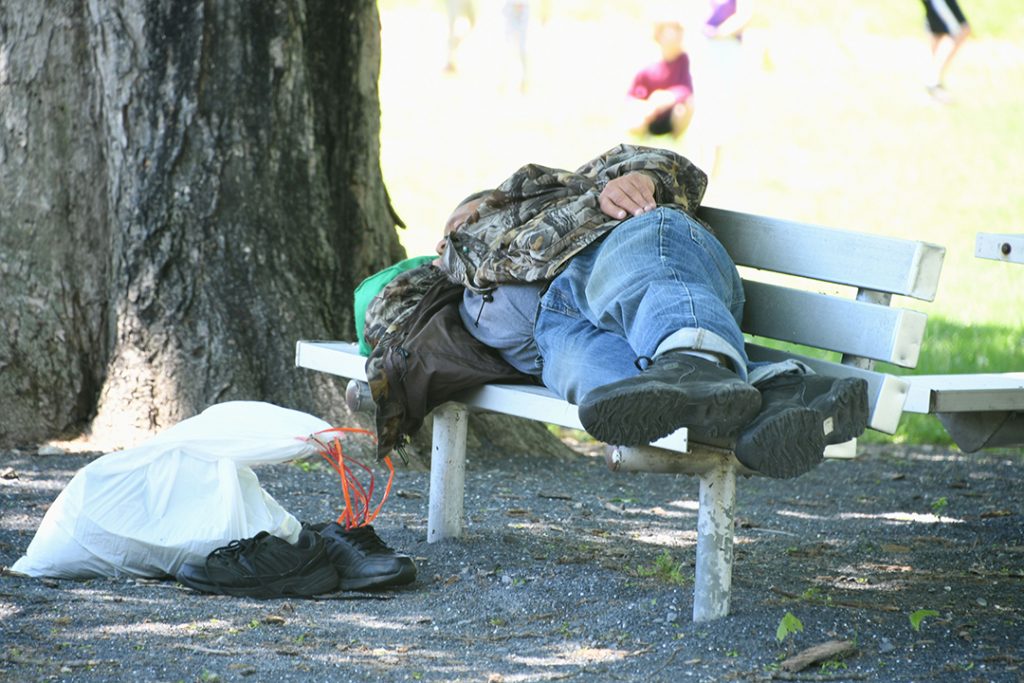
You don’t have to travel far to see evidence of broken lives and failed policies which are fueling the homeless epidemic in the metropolitan area of Fresno County. With the onset of Covid-19 local governments and community-based organizations mobilized to spend scarce resources and create over 400 new beds to bring the most vulnerable off the streets. Even with these new beds operating at or near capacity the prevalence of homelessness does not appear to be diminishing.
Homelessness Increase
According to the 2019 Point in Time Count (PIT), Fresno County had 2,131 homeless individuals, marking a 16 percent increase since 2018.
On August 26, PIT provided updated information on the homeless population conducted in January 2020. The PIT count shows a significant increase of 53 percent or 1,120 homeless individuals added to the streets of the 15 cities and the unincorporated areas within Fresno County.
What is Driving the Numbers
In addition to the lack of affordable housing in our community, we have seen a rise in the number of homeless that are on probation. In October 2019, 625 individuals on probation were homeless or transient. There were also 543 individuals on probation that are missing and thought to be homeless or in hiding.
At the August 26 PIT announcement, it was noted that there is a 15 percent increase – 717 individuals – on probation that are homeless or transient. In addition, there is a 4 percent increase of 567 probationers whose locations are unknown.
California Covid-19 regulations and policies for prisons and jails are influencing the numbers. Early release programs are in place to create space and help with prisoner movement. On July 1, the California Department of Corrections and Rehabilitation (CDCR) started to release inmates that have less than 180 days on their sentence. To date, the CDCR has released 11,000 state prisoners with more than 3,500 set to go through expedited parole.
The Fresno County Probation Department and community organizations were not adequately prepared for the increase in early release. Probation wasn’t prepared because of CDCR’s slow ramp up of financial and housing resources to meet the needs of early-released populations. Many of the prisoners released are transient, have substance abuse issues, and have mental illness. These individuals were released without any additional follow-up services.
Work Together
Homelessness is a local, regional, and statewide epidemic. We need to work together in shrinking the number of homeless in our community.
The Governor and legislators need to recognize that their decisions in Sacramento have consequences that impact the residents of Fresno County. Releasing prisoners early, especially without supportive services, is unacceptable. All this does is shift the burden of care from the state to local governments. Releasing prisoners into a homeless situation is not a solution we, or they, can afford.
In October of 2019, the Board of Supervisors approved the founding structure of Street2Home (S2H) which will serve as the countywide collective impact initiative to maintain focus on our homelessness priorities. S2H coordinates with designated city representatives, the Fresno-Madera Continuum of Care, and the Fresno Housing Authority to focus on homelessness reduction strategies.
Despite the increase in the PIT count, last year the Fresno-Madera Continuum of Care was able to move 1,284 homeless residents to permanent housing. In 2020, through our collective efforts, we have 865 homeless residents sheltered compared with 343 last year. With COVID-19 funding, we were able to secure 460 beds in our community and they are at 97 percent occupancy. So far, 9 percent of the roughly 1,500 people using the COVID beds – 135 – are transitioning to a safe housing situation.
Yet, the homeless problem persists and appears to be worsening.
Homelessness is an intractable problem across California. Be assured that our local governments are working together to face this challenge and we know there will be opportunities for funding new projects focusing on reducing the number of individuals on our streets. Our goal, to be clear, is to move all of them from transient to permanent housing.








